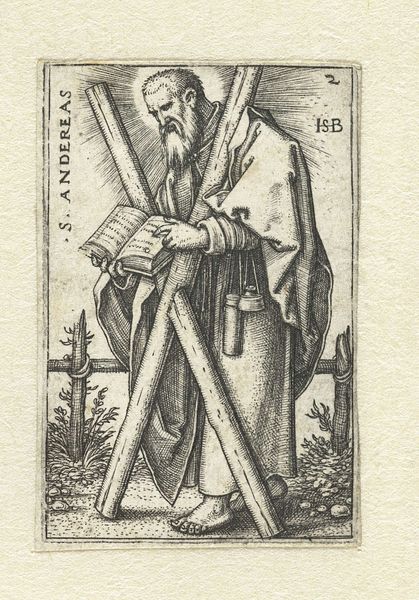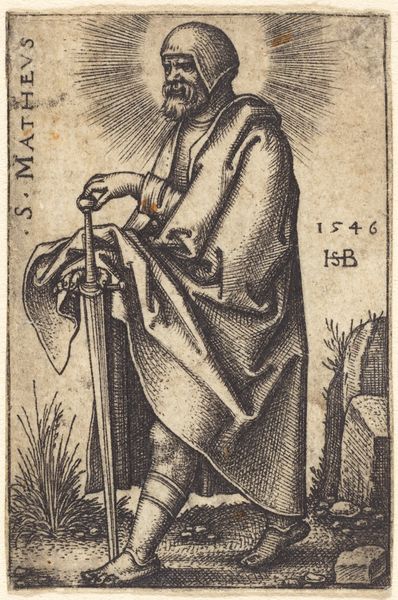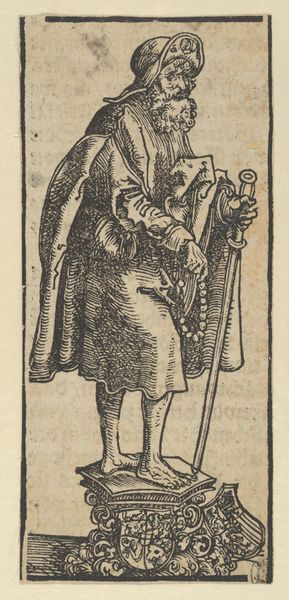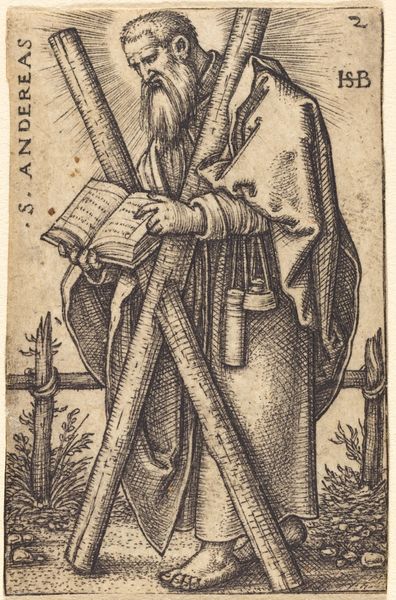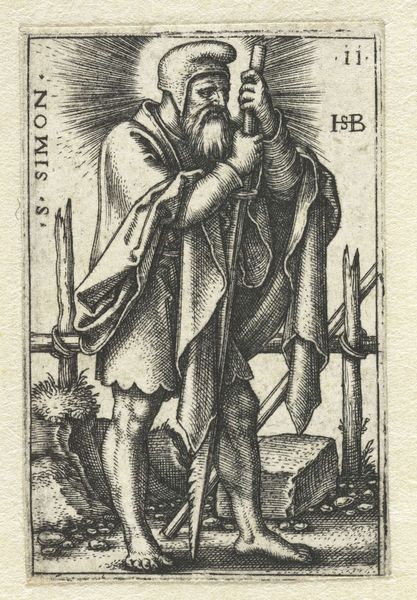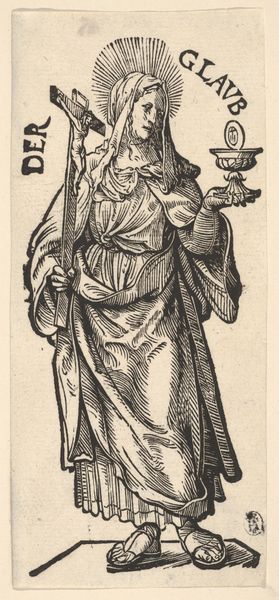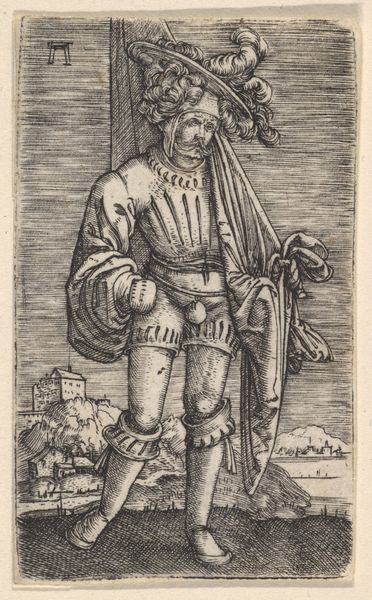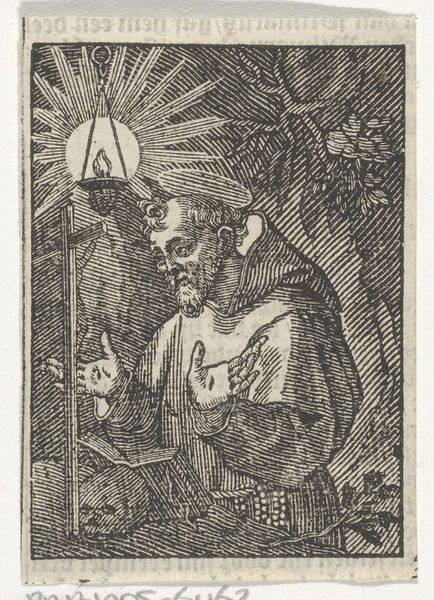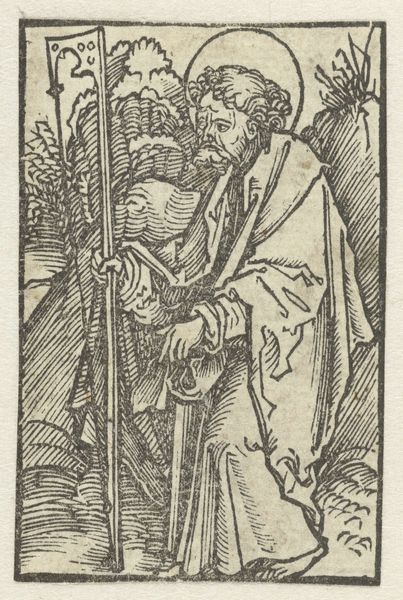
print, engraving
#
portrait
# print
#
figuration
#
history-painting
#
northern-renaissance
#
engraving
Copyright: National Gallery of Art: CC0 1.0
Editor: This is "Jacobus the Elder," an engraving by Sebald Beham. The texture created by the engraving process really defines the image. What draws your eye to this print? Curator: I immediately focus on the social context embedded in the materiality. Consider the paper itself, likely handmade, the precious metal used for the engraving plate, the labor-intensive process of creating the print. These all speak to the Northern Renaissance's complex relationship with religious imagery, commodity culture and its skilled artisans. Editor: Commodity culture, could you expand on that a bit? Curator: Certainly. The very act of creating prints made religious imagery more widely available. What was once unique, perhaps only viewed within the confines of a church, now is reproducible. Consumption shifts from devotion to possession. Also notice how Beham has included his signature initials. This serves as not only an artistic stamp, but a form of branding! Editor: That’s interesting, I never really considered the branding implications of a signature like that. Now when I look at the details, it reminds me of a craftsman displaying his high-quality work. The crispness of lines must've been difficult to master with those tools. Curator: Precisely! The technique elevates this engraving above simple religious propaganda, doesn't it? We have evidence of mastery on display, while simultaneously creating reproducible commodities. Editor: I learned so much! Thinking about materials in relation to economic factors of production, that opens up the whole discussion of Northern Renaissance art in a new light. Curator: Absolutely. The "how" and "why" an artwork was produced is as essential as the image it projects.
Comments
No comments
Be the first to comment and join the conversation on the ultimate creative platform.

